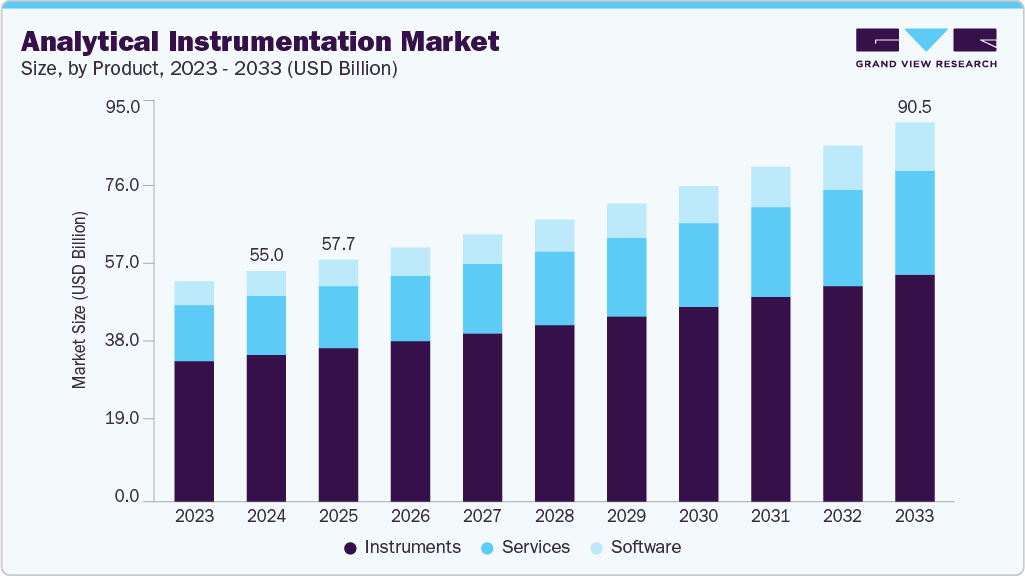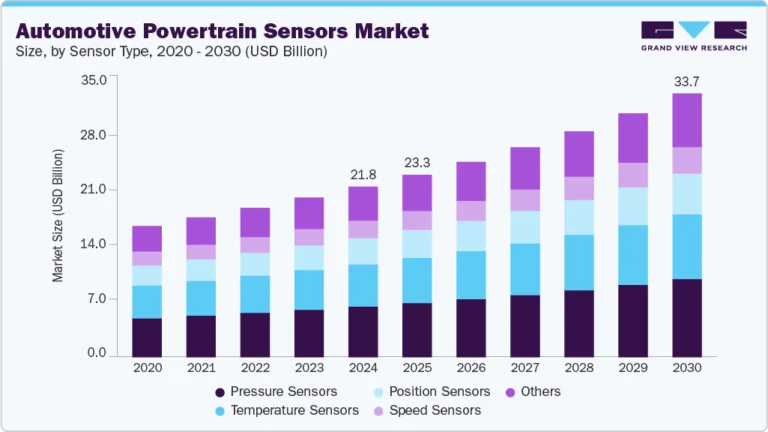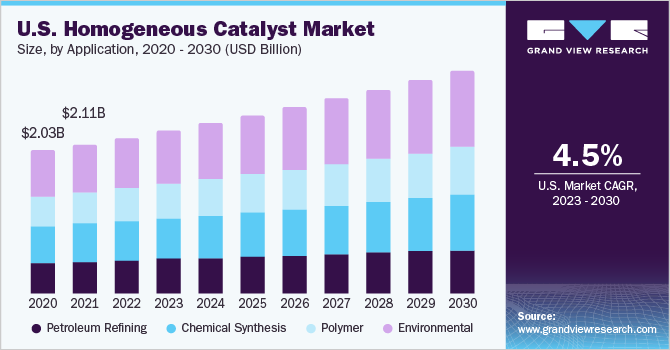Analytical Instrumentation Market Size, Share & Trends Analysis growing at a CAGR of 5.79% from 2025 to 2033

The global analytical instrumentation market size was estimated at USD 55.00 billion in 2024 and is anticipated to reach USD 90.48 billion by 2033, growing at a CAGR of 5.79% from 2025 to 2033. Rising requirements for accurate quality assurance, ongoing innovations in research and development, stricter regulatory standards, and broader usage across sectors such as pharmaceuticals, environmental monitoring, food safety, and chemicals primarily fuel the market expansion.
Key Market Trends & Insights
- The North America analytical instrumentation market held the largest share of 46.95% of the global market in 2024.
- The analytical instrumentation industry in the U.S. is expected to grow significantly over the forecast period.
- By product, the instruments segment held the largest market share of 63.66% in 2024.
- Based on technology, the polymerase chain reaction (PCR) segment held the highest market share in 2024.
- By application, the life sciences research & development companies segment held the highest market share in 2024.
Market Size & Forecast
- 2024 Market Size: USD 55.00 Billion
- 2033 Projected Market Size: USD 90.48 Billion
- CAGR (2025-2033): 5.79%
- North America: Largest market in 2024
- Asia Pacific: Fastest growing market
Request a free sample copy or view report summary: https://www.grandviewresearch.com/industry-analysis/analytical-instrumentation-market-report/request/rs1
Technological Innovation
Technological innovation is a major driver of growth in the global analytical instrumentation industry. Advances in chromatography, mass spectrometry, spectroscopy, and nuclear magnetic resonance (NMR) have significantly enhanced analytical instruments’ accuracy, sensitivity, and efficiency. For instance, in February 2024, Thermo Fisher Scientific launched its Dionex Inuvion ion chromatography system in the United States. The reconfigurable instrument streamlined ionic and small polar compound analysis across diverse laboratory sectors. These improvements enable faster and more precise detection of chemical and biological compounds, which are critical in applications ranging from drug development and clinical diagnostics to environmental testing and food quality assurance. As industries demand more detailed and reliable analytical results, the push for cutting-edge technologies continues to grow.
Moreover, the integration of emerging technologies such as artificial intelligence (AI), machine learning, and the Internet of Things (IoT) has revolutionized the capabilities of analytical systems. These innovations support automation, real-time data analysis, remote monitoring, and predictive maintenance, greatly improving operational efficiency and reducing human error. The trend toward miniaturization and developing portable analytical instruments is also expanding the market by making advanced analysis accessible in field settings, such as remote healthcare facilities, environmental sites, and food safety inspections. Together, these advancements drive broader adoption and open new growth opportunities across various industries.






